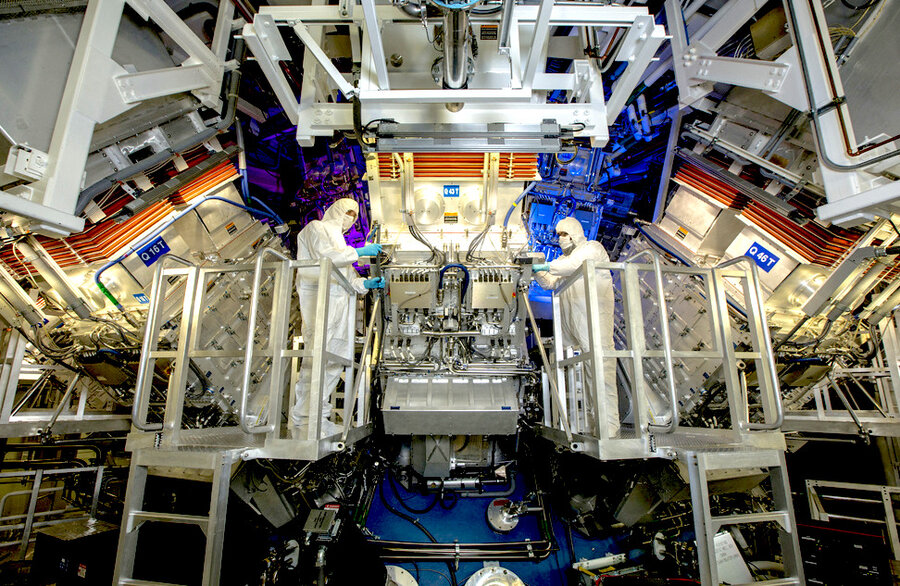Limitless thinking in climate talks
Loading...
This year’s United Nations summit on climate change may see a shift in its mental climate on Tuesday. With talks stalled on reducing carbon emissions, the United States plans to deliver its main – and potentially unifying – message at the summit: a global plan to commercialize nuclear fusion as a substitute for fossil fuels.
“Fusion energy is no longer just a science experiment,” said John Kerry, U.S. special presidential envoy for climate, last month in anticipation of the announcement. Rather, after a recent scientific breakthrough in fusion research, the nascent technology that offers unlimited energy can be “an emerging climate solution,” he said.
Pooling the world’s many private and public efforts to develop fusion – or the harnessing of energy from pushing atoms together – might help provide a change of tone in climate talks. If other nations sign on to the U.S. plan, it would add to an agreement at the G20 meeting of major economies in September to triple their renewable energy capacity.
Such steps toward boosting energy alternatives reflect a necessity to move climate negotiations from the stalled issue of how nations can share the sacrifices needed in curbing carbon pollution. The talks need a “trajectory of progress,” writes Asif Husain-Naviatti, a visiting fellow at Columbia University, in The Conversation, based on “global collective action” and “universal values.”
“Common ground can also often be reached incrementally by building trust, confidence, comfort and eventually clarity over time,” he writes, based on his experience in negotiating agreements on sustainable development.
The U.S. has been a leader in fusion, notably with last year’s breakthrough in fusion ignition at Lawrence Livermore National Laboratory. That achievement “showed that controlled fusion can be a source of clean energy for humanity,” said Dr. Scott Hsu, lead fusion coordinator at the U.S. Department of Energy. “Practical fusion energy may now be less a matter of time than of collective societal will.”
Fusion’s full promise may be years away, but in the meantime it may alter the dynamics in global climate talks. As economist Paul Romer, a winner of the Nobel Memorial Prize in Economic Sciences, has noted, in the many routes to solving climate change, “we will be surprised that it wasn’t as hard as we anticipated.” Innovation in energy, he adds, requires inspiration. “We consistently fail to grasp how many ideas remain to be discovered.” The U.S. plan for the world to collaborate on commercialized fusion sets the ground for success with climate change rather than failure.







